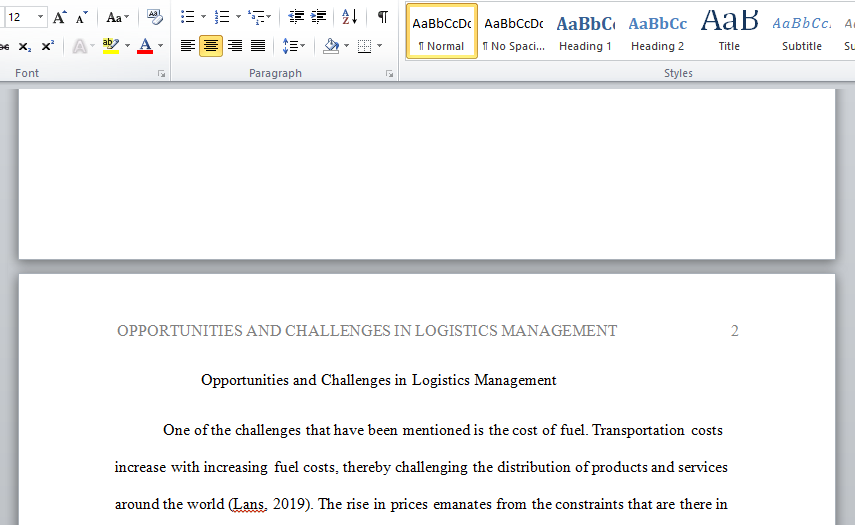Expound on the challenges and opportunities in logistics management
Discuss the future challenges and opportunities in logistics management.Write your own point of view.
- Fuel Costs: Higher fuel prices are likely to increase transportation costs for ksa shippers this year by pushing up fuel surcharges. Rising ksa diesel fuel prices are escalating surcharges added to freight rates, which is reversing a two-year trend that cut into the revenue and earnings of truckers as fuel prices plummeted.
- Business Process Improvement: it has become an increasing challenge for the logistics industry to stay on top of new advances in business processes. Taking advantage of these new opportunities sounds enticing but adoption and onboarding can be overwhelming.
- Improved Customer Service: Customers want full transparency into where their delivery is at all times. These days, the location of a package is as interconnected as your social network.
- Economy: The industry is pressured by increasing compliance regulations, declining demand, additional capacity with additional increases in key cost centers.
- Driver Shortage & Retention. Hiring and retention remain an issue despite the lower demand mentioned above.
- Government Regulations. Carriers face significant compliance regulations imposed by federal, state and local authorities.
- Environmental Issues. The anti-idling and other emission reduction regulations brought about by state and local governments has created concern that the compliance costs could exceed benefits.
- Technology Strategy & Implementation. While the industry understands and supports many of the benefits of these technologies, some questions remain as to how they will pay for it and who will help implement the improvements.
the opportunities:
- Flexibility: Meeting consumer’s requirements at multiple locations with multiple transport modes at different times requires a flexible supply chain that can adapt easily to unexpected changes and circumstances.
- Globalisation: International, mature and emerging markets have become a part of the overall business growth strategy for many companies. Going ‘international’ has become the standard and logistic solution providers need to enable that trend.
- Near shoring: As labour costs in Asia and transportation costs rise, increasing amounts of manufacturing are being brought closer to the end user.
- Multi-channel sourcing: End-consumers increasingly source via multiple channels, ranging from brick & mortar shops to e-commerce. The logistics industry needs to support multi-channel strategies of their customers.
- Information technology: The growing complexity and dynamism of supply chains requires increasingly advanced Information Technology solutions.
- Continuity: To be able to secure speed to market and to reduce risk of delays, alternative transport modes and routes are required to support the continuing trend of outsourcing of logistics services.
- Sustainability: Customers increasingly prefer products that are made and sourced in ‘the right way’; minimising business’ social, economic and environmental impact on society and enhancing positive effects.
- Compliance: Anti-bribery and corruption legislation is having an increasing impact on supply chains, since multinational companies demand that no facilitation payments are made during the export of their goods, yet still seek to source from low cost countries, which are often also at the bottom of Transparency International’s global corruption index.
- Partnerships: Manufacturers continuously search for supply chain innovations and gains through partnerships with logistic service providers.
- End-to-end visibility: Complete visibility of the entire supply chain aspires to achieve true demand-driven planning, allowing efficient response to changes in sourcing, supply, capacity and demand.
- Complexity: Supply chains are becoming increasingly complex and dynamic with sourcing locations being changed increasingly quickly and purchase orders becoming smaller and more frequent.
Answer preview :

Word limit : 571 words
